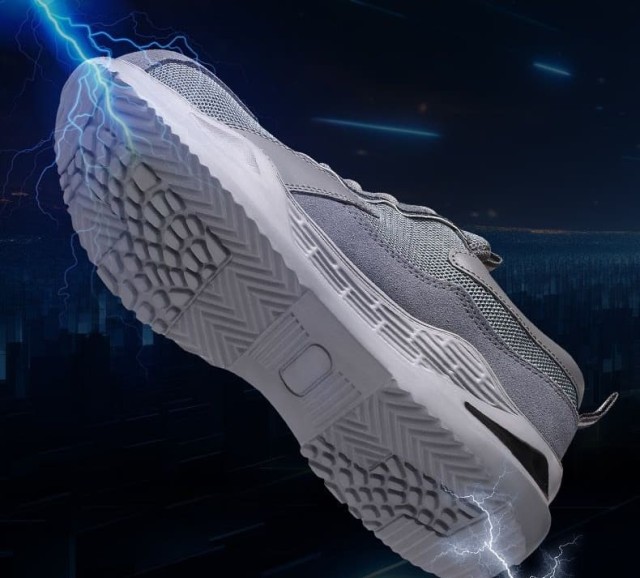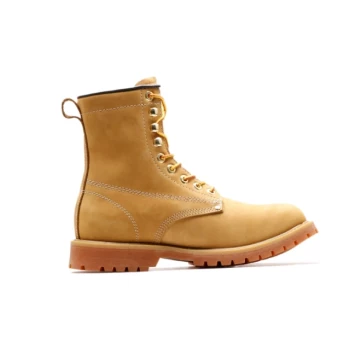Workplace electrical hazards pose silent but severe risks—from industrial grids to semiconductor labs. Modern electrical hazard (EH)-rated footwear combines advanced dielectric materials and rigorous safety certifications to create a critical barrier between workers and potential injuries. This article breaks down the science, standards, and selection criteria behind effective EH-rated shoes.
Electrical Hazard Protection in Work Shoes: Beyond Basic Claims
EH-rated footwear isn’t just rubber soles and vague promises. It’s engineered to:
- Block accidental contact with live circuits
- Dissipate static electricity to prevent sparks in sensitive environments
- Isolate the wearer from ground potential
Research shows that materials like vulcanized rubber and polyurethane composites form the foundation of this protection, acting as insulators while maintaining durability.
The Role of Dielectric Materials and Conductive Design
Dielectric (non-conductive) materials resist electric current flow. In EH shoes, these are layered to:
- Outsoles: High-resistance rubber compounds prevent current from grounding through the foot.
- Midsoles: Added insulation layers enhance protection against high-voltage exposure.
- Static control: Conductive fibers woven into the upper disperse static charges safely.
A well-designed EH shoe balances insulation with flexibility, ensuring safety doesn’t compromise comfort during long shifts.
ASTM, OSHA, and IEC: Decoding Safety Certifications
Not all "safety" shoes meet EH standards. Look for:
- ASTM F2413-18: Specifies EH-rated footwear must withstand 18,000 volts at 60 Hz for 1 minute without current leakage.
- OSHA 29 CFR 1910.136: Mandates EH protection for workers exposed to electrical hazards.
- IEC 61340: International standard for electrostatic discharge (ESD) control.
These certifications ensure rigorous testing for real-world scenarios, like accidental contact with live wires or flammable vapors.
Industry Applications: From Semiconductor Labs to Industrial Grids
EH footwear is critical in:
- Energy sector: Linemen handling high-voltage equipment
- Manufacturing: Workers near industrial machinery with electrical components
- Electronics labs: Technicians assembling sensitive devices vulnerable to ESD
In semiconductor facilities, for example, a single static spark can destroy microchips worth thousands—making EH shoes with ESD control a cost-saving necessity.
Choosing the Right EH-Rated Footwear
Key Features to Prioritize for High-Risk Environments
- Certification labels: Verify ASTM/OSHA/IEC compliance.
- Material quality: Thick, puncture-resistant soles with dielectric properties.
- Fit and comfort: Cushioned insoles and breathable linings for all-day wear.
Avoid shoes with metal components (e.g., toe caps) unless they’re specifically tested for EH compliance.
Maintenance Practices to Preserve Electrical Safety Over Time
EH protection degrades if neglected. Extend shoe lifespan by:
- Cleaning regularly: Remove conductive debris like metal shavings.
- Inspecting for damage: Cracks or worn soles compromise insulation.
- Replacing periodically: Most EH shoes lose effectiveness after 12–18 months of daily use.
Stay Protected with 3515’s EH-Rated Footwear Solutions
For distributors and bulk buyers seeking reliable electrical hazard footwear, 3515 combines certified safety with industrial-grade durability. Our range meets global standards for workers who face live circuits, static-sensitive environments, or explosive atmospheres. Request a catalog today to equip your workforce with shoes that prioritize protection without sacrificing comfort.
Products You Might Be Looking For:
View certified electrical hazard work boots
Explore customizable EH-rated safety footwear
Related Products
- Durable Leather Work Boots Wholesale Manufacturer & Custom Factory
- Wholesale Durable 6-Inch Work Boots | Custom & Private Label Manufacturer
- Durable Goodyear Welt Leather Work Boots for Wholesale & Private Label
- Safety Footwear Wholesale Manufacturer for Custom OEM/ODM Production
- Wholesale Safety Footwear Manufacturer for Bulk & Custom OEM Orders
Related Articles
- How Lace-Up Work Boots Solve Workplace Safety Challenges
- How to Choose Work Boot Upper Materials for Safety, Durability, and Job-Specific Demands
- How Work Boot Heel Design Impacts Job Performance and Safety
- How to Choose Work Boot Materials: Balancing Weight, Safety, and Job-Specific Needs
- How to Solve Work Boot Discomfort Without Sacrificing Safety or Durability



















